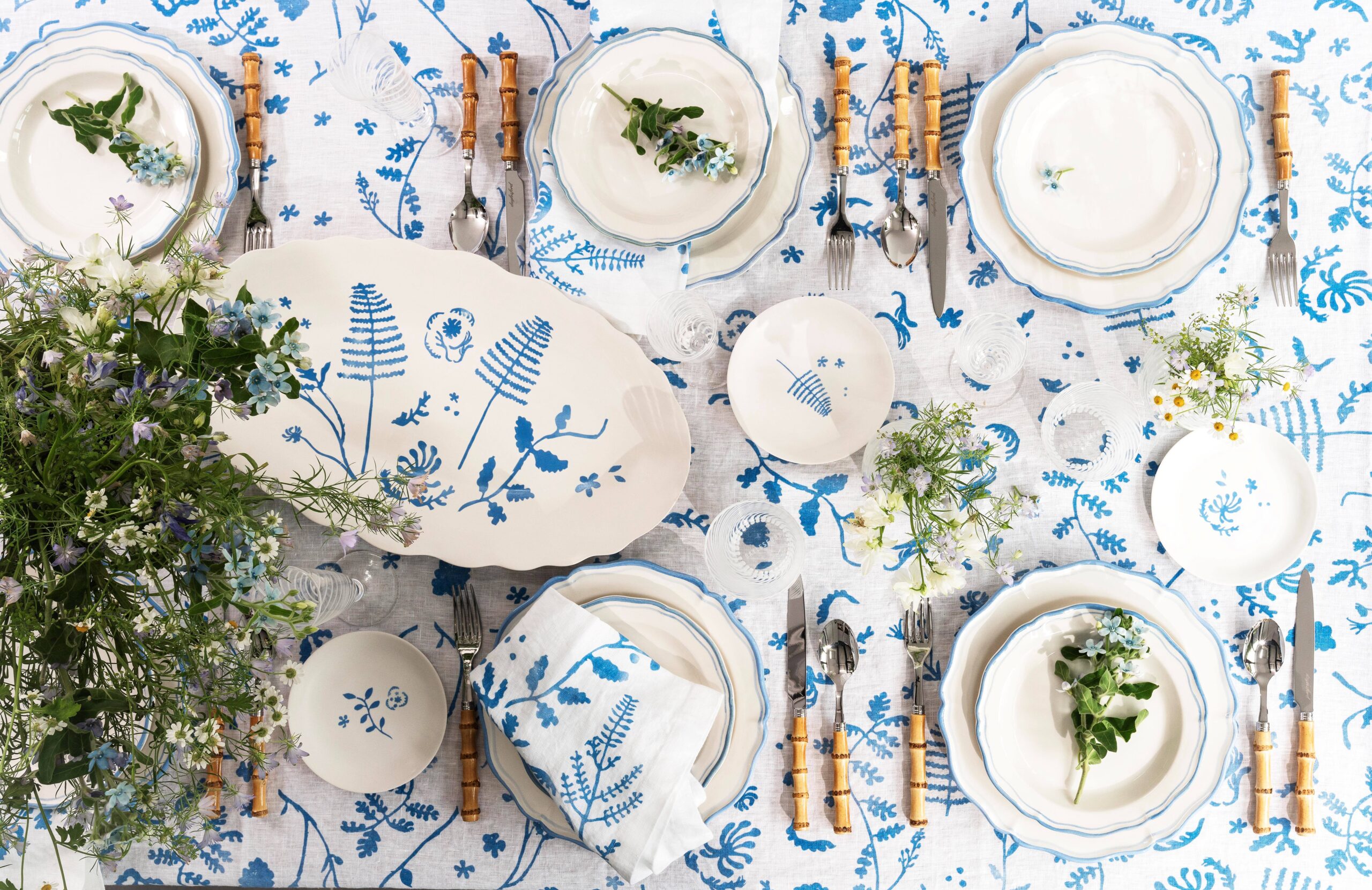In an exclusive collaboration with renowned artist Hugo Guinness, Daylesford Organic has launched its largest homewares collection to date
 The Wildflower Collection by Daylesford Organic features illustrations by artist Hugo Guinness. Photography by NW Studio
The Wildflower Collection by Daylesford Organic features illustrations by artist Hugo Guinness. Photography by NW Studio
Words by Roddy Clarke
In an exclusive collaboration with artist and illustrator Hugo Guinness, the much-loved British farm shop Daylesford Organic has launched The Wildflower Collection, a new capsule collection of homewares inspired by the natural beauty of the English countryside. With Daylesford Organic being one of many creative endeavours of Lady Carole Bamford, it also isn’t the first time she has come together creatively with Guinness, who worked on illustrations for The Wild Rabbit, Lady Bamford’s revered restaurant located in the Cotswolds. This collection not only encapsulates Guinness’ whimsical style but also alludes to the values of a slow and mindful lifestyle and an appreciation of British craft – considerations that both Lady Bamford and Daylesford champion continually.
 The illustrations reference the native plants found in the meadows of Daylesford Farm. Photography by NW Studio
The illustrations reference the native plants found in the meadows of Daylesford Farm. Photography by NW Studio
‘I have always held the skill and dedication it takes to create unique pieces of art in the highest esteem,’ she comments, when discussing her mission to work with creatives that embody the Daylesford aesthetic. ‘I am particularly drawn to working with artisans who share my passion for natural materials and a commitment to minimal environmental impact.’ The collection includes a series of home accessories from table linen to serving platters, ornamental vases and wildflower candles with each design featuring a delicate botanical illustration. Introducing a variation on the Daylesford’s hallmark colour palette, the illustrations are finished with a vibrant blue pigment contrasting a stark white background with the table linens also offered in the reverse colourway – white illustrations on a vibrant blue backdrop.
 The vibrant blue hues of the Wildflower Collection take inspiration from the blue skies seen over Daylesford’s wildflower meadows. Photography by NW Studio
The vibrant blue hues of the Wildflower Collection take inspiration from the blue skies seen over Daylesford’s wildflower meadows. Photography by NW Studio
While exuding the classic heritage appeal of the brand, this collection has been created with the future in mind and works well in both traditional and contemporary settings. The timeless watercolour scenes depict wildflower species native to Daylesford’s own meadows such as cornflower, ragwort and flax – a plant from which the table linens are derived. Heirlooms of the future, each piece is consciously handcrafted by artisans in the UK and India, with the ceramics fettled, fired and glazed by hand in a small ceramics factory in Stoke-on-Trent. Speaking of the collaboration with Guinness, who is known for drawings seen in The New York Times and his unique collaborations with film director Wes Anderson, Bamford explains how aside from being a brilliant artist he is also a dear friend. ‘His work, meticulously sketched, painted, cut, and printed by hand in his Brooklyn studio, embodies the essence of true craftsmanship,’ she says. ‘He has a wonderful way of pushing me beyond my comfort zone, making our collaborative design sessions both exhilarating and inspiring. Together, we dream up creations that are as beautiful as they are meaningful.’
 Alongside the ceramics and table linens, the collection also includes a series of classic furniture designs upholstered in a printed fabric with a larger scale version of the print. Photography by NW Studio
Alongside the ceramics and table linens, the collection also includes a series of classic furniture designs upholstered in a printed fabric with a larger scale version of the print. Photography by NW Studio
Alongside the tableware collection, the illustrations can also be found on a series of soft furnishings. An armchair, sofa and ottoman, with classic, traditional silhouettes, have been brought to life with large scale depictions of Guinness’ intricate creations. With each piece made by hand, it mirrors the mindful practices of the farm itself. ‘The collection takes inspiration from the blue skies seen over our wildflower meadow at the farm,’ Bamford continues. ‘Not only is the meadow beautiful and fragrant, but it’s also an important part of Daylesford’s traditional, organic agricultural practices, feeding the bees and other pollinating insects that support our entire food system.’ With this visual display reconnecting us to the beauty and importance of natural ecosystems such as this, it is a reminder that design can be a force for change not only through thought-provoking narratives but how such creations can encourage and permeate a sense of mindfulness as they take place within our homes.
The Wildflower Collection can be discovered here.
Get a curated collection of design and architecture news in your inbox by signing up to our ICON Weekly newsletter
















